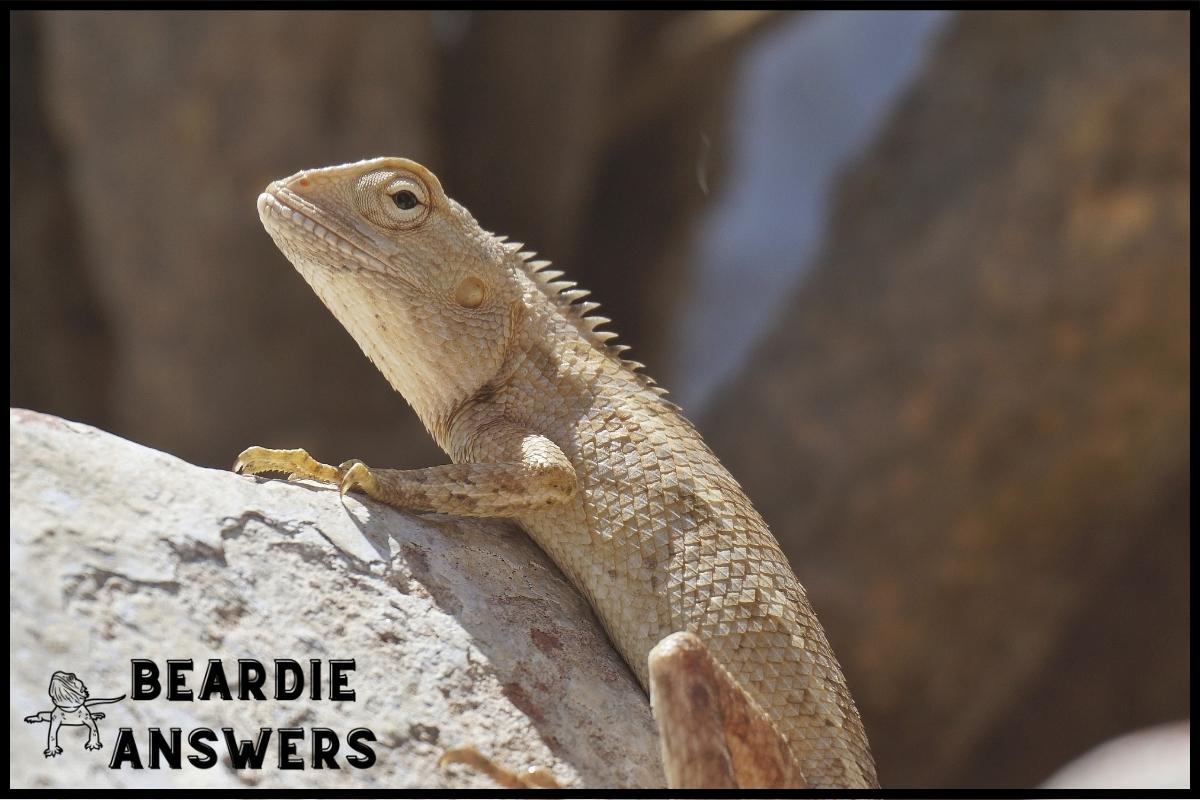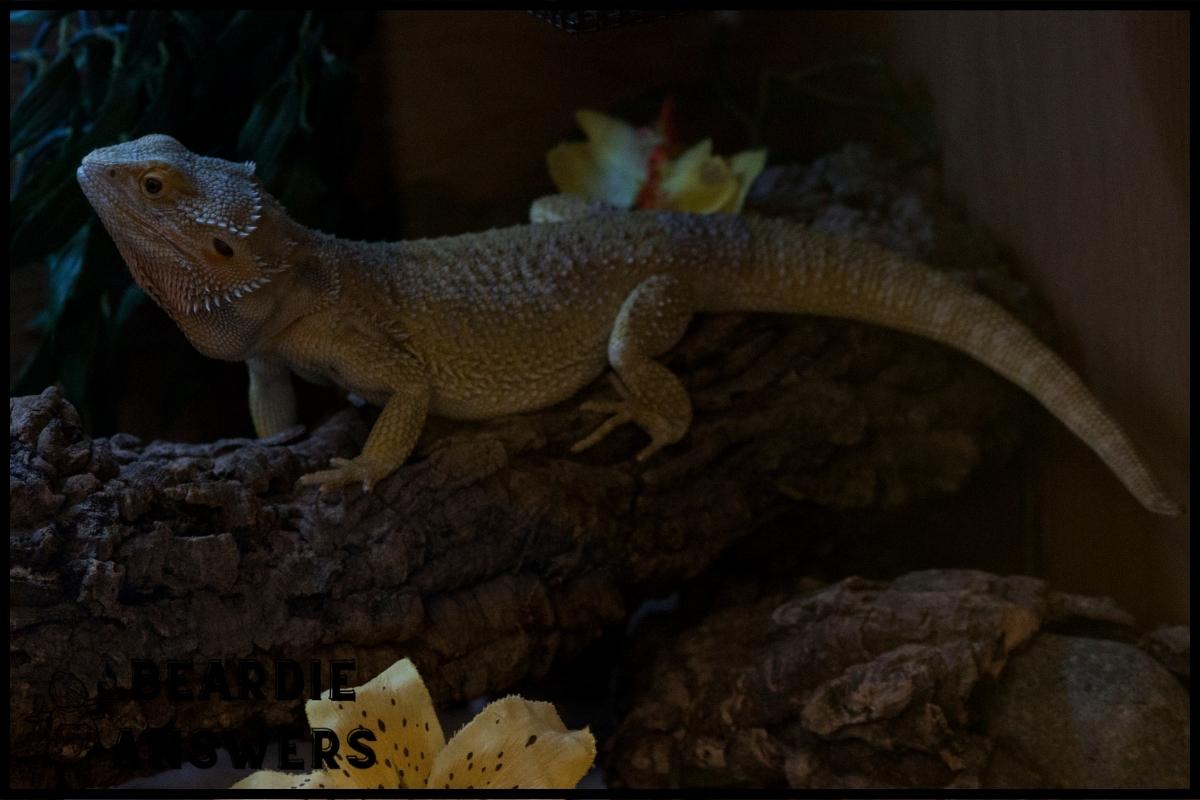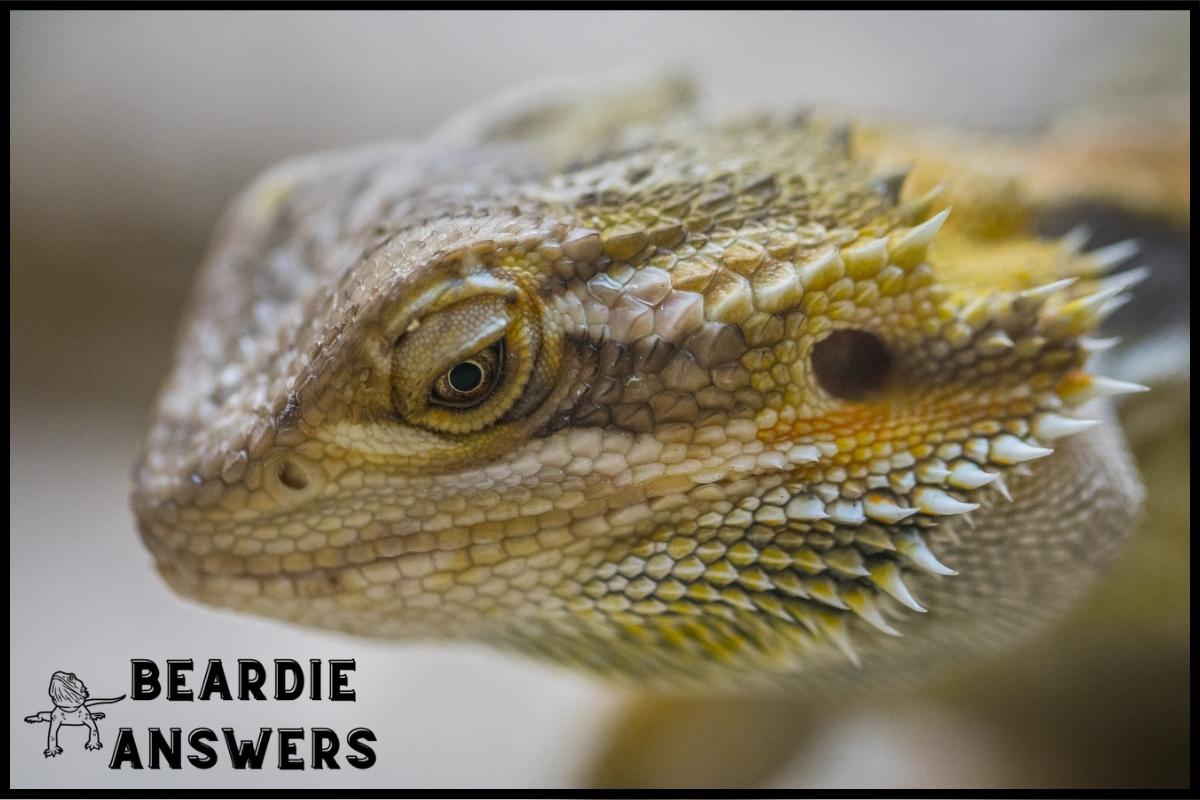Bearded dragons come in various colors, including red, orange, yellow, green, blue, purple, brown, and black. Some of these colors are achieved through breeding or genetic mutations, while others may change with age or environmental factors.
What You'll Learn
Red Bearded Dragons
Red bearded dragons are a popular choice for reptile owners due to their unique color and bright personality. They require specialized care and temperature needs in order to stay healthy, so it’s important to do your research before getting one. With the right environment, red bearded dragons can live up to 10 years or longer.
When it comes to caring for a red bearded dragon, they need an enclosure that is at least 40 gallons with proper lighting and humidity levels as well as regular cleaning of substrate and decorations. Temperature should be kept between 78-88°F (25-31°C) during the day with a basking spot reaching 95-100°F (35-38°C). At night, the temperature should drop down to 70-78°F (21–26°C).
UVB lighting is also necessary for them to get enough vitamin D3 which helps regulate calcium absorption.
Feeding your red beardie appropriately is also essential for their health. In general, juveniles should be fed daily while adults can be offered every other day; crickets should make up about 80% of their diet supplemented by mealworms and greens like collard greens or turnip greens. Having appropriate feeding supplies such as tweezers makes this process much easier!
With these tips in mind, you’re now ready to take on the task of caring for a red bearded dragon – but don’t forget that orange bearded dragons have different requirements too!
Orange Bearded Dragons
Like red bearded dragons, orange bearded dragons are also a popular color variant. While they may have less of an intense hue than their red counterparts, orange beardies still possess the same loving and curious personalities as other colors.
When it comes to caring for your pet dragon properly, there are some tips you should keep in mind:
- Orange care – Orange beardies need access to UVB lighting just like any other breed of dragon; however, they do require more light intensity than others because of their lighter skin tones. Additionally, be sure to provide them with plenty of calcium-rich foods and vegetables to ensure healthy growth and development.
- Orange diet – When feeding your orange beardie, focus on providing them with lean proteins such as crickets or mealworms. You can also offer occasional treats like fruits or insects that will help meet their nutritional needs without overfeeding them. Lastly, always make sure that fresh water is available at all times!
Finally, because of their bright coloring and active nature, these reptiles make great companions for experienced reptile owners who understand the importance of proper husbandry techniques and nutrition requirements for this species. With enough love and attention from its owner, an orange bearded dragon can live up to 10 years!
Looking for something even brighter? Yellow bearded dragons might be the perfect choice for you!
Yellow Bearded Dragons
Yellow bearded dragons can be found in a variety of habitats, from deserts to rain forests. They prefer warmer climates and plenty of sunlight, but they are also resilient enough to survive extreme temperatures for short periods.
When it comes to their dietary needs, yellow bearded dragons enjoy both plants and insects as sources of food. Insects like crickets and mealworms provide them with important nutrients like protein while fruits and vegetables give them vitamins and minerals that keep them healthy. It’s important to remember that not all types of vegetation are safe for these lizards so research is always recommended when choosing foods for your pet.
Green bearded dragons have some similar habitat requirements as their yellow counterparts. They too thrive in warm climates with plenty of UV exposure, although green varieties seem to be more tolerant of cooler weather than yellows.
Their diet consists mostly of plant matter such as leafy greens, fruits, and flowers; however they still need an occasional insect or two to provide essential proteins. Furthermore, it’s vital that owners supplement the diets of their green dragons with calcium powder which helps promote strong bones and shells.
Considering their preferences for temperature and nutrition, owning a yellow or green beard dragon requires time and dedication on the part of the owner. Providing adequate care means researching a species’ particular needs before bringing one home – this includes exploring suitable habitats as well as understanding what kind of food works best for each type of lizard.
Understanding how to properly care for these reptiles will ensure they live long happy lives within their new homes! Moving forward into the next section about green bearded dragons…
Green Bearded Dragons
Moving on from yellow bearded dragons to their green counterparts, these lizards have similar habitat requirements. They need lots of UVB lighting and basking spots with temperatures in the range of 95-100°F. It’s important to maintain humidity levels between 40-60% as well, so they stay hydrated and healthy.
When it comes to health maintenance, good nutrition is key for green bearded dragons. A mix of insects (mealworms, crickets) and greens should make up the majority of their diet. Fruits can also be included occasionally for a treat but should not make up more than 10% of their meals due to the natural sugars found in them. Additionally, regular vet visits are recommended every 6 months or so to ensure that your lizard is free from any parasites or illnesses.
It’s time now to move onto blue bearded dragons which bring a unique aesthetic appeal compared to other colors variations. The smooth turquoise scales set this species apart from others and require slightly different care than what has been discussed previously when talking about yellow and green bearded dragons…
Blue Bearded Dragons
Let’s talk about the care and morphs of blue bearded dragons.
We’ll look at the different needs they have, as well as the different types of blue bearded dragons available.
Blue Bearded Dragon Care
When it comes to caring for a blue bearded dragon, careful handling is essential. As with all lizards, you should never pick them up by the tail as this could cause serious damage and even lead to its loss. Instead, hold them gently near their midsection using two hands.
To help your blue beardie stay healthy, make sure that they have a nutritious diet consisting of live insects such as crickets and mealworms along with leafy greens like kale or collard greens. Additionally, provide a calcium supplement every few days to ensure proper bone growth and health.
If done properly, providing appropriate care can guarantee that your blue bearded dragon will remain happy and healthy for years to come!
Blue Bearded Dragon Morphs
Now that we know how to properly care for a blue bearded dragon, let’s take a look at some of the different morphs available.
Through hybridization and selective breeding, breeders have been able to create distinct varieties in terms of coloration, patterning and even size.
They can range from bright blues or greens to reds and oranges depending on the lighting effects used.
Each one is unique and offers its own beauty and charm!
Purple, Brown, And Black Bearded Dragons
As if the bearded dragons weren’t already stunning enough, they come in even more spectacular colors. If you thought their fiery oranges and zesty yellows were captivating, just wait until you lay eyes on their purple morphs, brown genetics, and jet black scales! It’s a spectacle that will leave anyone breathless.
Here is a list of features for these three unique dragon colorings:
- Purple Morphs – These dark-hued beauties have bright patches of iridescent blues and purples.
- Brown Genetics – This coloring consists of various shades from light to dark brown with some yellow highlights here and there.
- Black Scales – Black dragons typically show off an emerald sheen when exposed to direct light.
These majestic animals are sure to be centerpieces in any home or terrarium setting due its vibrant hues; it’s no wonder why so many people love them!
Whether you want one as a pet or simply admire it from afar, these little creatures are definitely worth your attention!
Conclusion
All of these amazing, multicolored bearded dragons are truly unique and beautiful creatures. From the deep reds to the vibrant greens, they dazzle us with their dazzling array of colors.
With their personality-filled personalities, they make wonderful companions for those looking to add a bit of life into their homes.
No matter which color you choose, one thing is certain: owning a bearded dragon is sure to bring much joy and happiness in your life!
Bearded dragons come in an extraordinary range of shades, making them perfect pets for anyone who loves variety and originality.

Hi! My name is Bryan, I am the “one behind the words” here are BeardieAnswers.com. I believe that providing quality care and nutrition is the best way to ensure the health of your pet. Every beardie is special and deserves the best care and attention. If you have questions about your bearded dragon, please don’t hesitate to ask! View My Full Author Page




